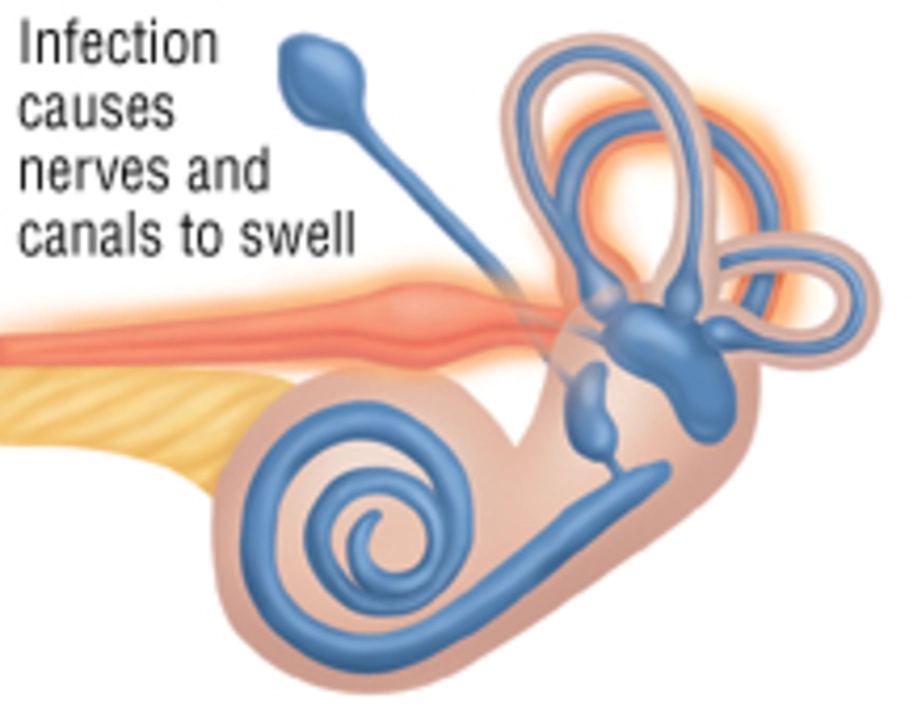Understanding Vertigo: The Basics
As someone who has experienced vertigo firsthand, I know how frightening and debilitating this condition can be. Vertigo is a sensation of spinning or dizziness that can affect your balance and coordination. There are several types of vertigo, and each has its own unique set of causes and symptoms. In this article, we'll be discussing the three most common types of vertigo: Benign Paroxysmal Positional Vertigo (BPPV), Meniere's Disease, and Vestibular Neuritis. By understanding these conditions, we can better manage and treat them, ultimately improving our quality of life.
Benign Paroxysmal Positional Vertigo (BPPV): Overview and Symptoms
BPPV is the most common type of vertigo and is caused by a problem in the inner ear. Specifically, it occurs when calcium carbonate crystals, known as otoconia, become dislodged and enter the semicircular canals. These canals are responsible for maintaining our balance, and when these crystals interfere with their function, it can result in episodes of vertigo.
Common symptoms of BPPV include sudden, short-lived episodes of dizziness that are triggered by changes in head position. These episodes typically last for a few seconds to a minute and can be accompanied by feelings of imbalance, nausea, and even vomiting. In my experience, BPPV episodes were most likely to occur when I was lying down or getting up from a lying position.
Diagnosing and Treating BPPV
If you suspect you may have BPPV, it's essential to consult with a healthcare professional for a proper diagnosis. They will likely perform the Dix-Hallpike test, which involves moving your head into specific positions to see if it triggers vertigo. If the test is positive, it's likely that you have BPPV.
Fortunately, BPPV can be treated with simple, non-invasive techniques known as repositioning maneuvers. The most common maneuver is the Epley maneuver, which involves moving your head in a specific sequence to help reposition the displaced crystals. In my experience, this maneuver provided almost immediate relief from vertigo symptoms. Additionally, your healthcare provider may recommend vestibular rehabilitation exercises to help improve balance and reduce dizziness.
Meniere's Disease: Overview and Symptoms
Meniere's Disease is a chronic, progressive inner ear disorder that affects the balance and hearing system. The exact cause of Meniere's Disease is still unknown, but it is believed to be related to an abnormal buildup of fluid in the inner ear.
Common symptoms of Meniere's Disease include episodes of vertigo that can last anywhere from 20 minutes to several hours, fluctuating hearing loss, tinnitus (ringing in the ears), and a feeling of fullness or pressure in the affected ear. In my experience, Meniere's Disease episodes were often unpredictable and would leave me feeling exhausted and disoriented.
Diagnosing and Treating Meniere's Disease
Diagnosing Meniere's Disease can be challenging, as there is no definitive test for the condition. Your healthcare provider will likely take a detailed medical history, conduct a physical examination, and may order tests such as audiometry or vestibular testing to rule out other causes of your symptoms.
While there is no cure for Meniere's Disease, various treatments can help manage symptoms. These may include medications to control vertigo, diuretics to reduce fluid retention, hearing aids to address hearing loss, and lifestyle changes such as a low-salt diet and stress reduction. In my experience, finding the right combination of treatments was crucial in managing my Meniere's Disease symptoms.
Vestibular Neuritis: Overview and Symptoms
Vestibular Neuritis is an inflammation of the vestibular nerve, which connects the inner ear to the brain and is responsible for relaying balance information. This inflammation is typically caused by a viral infection, such as the common cold or flu.
Common symptoms of Vestibular Neuritis include a sudden onset of severe vertigo, which can last for several days, along with nausea, vomiting, and problems with balance. In my experience, Vestibular Neuritis was incredibly disruptive to my daily life, making it difficult to work or even walk around my house.
Diagnosing and Treating Vestibular Neuritis
If you suspect you may have Vestibular Neuritis, it's important to consult with a healthcare professional for a proper diagnosis. They will likely perform a physical examination and may order tests such as an MRI or blood work to rule out other potential causes of your symptoms.
Treatment for Vestibular Neuritis typically focuses on managing symptoms and may include medications to control vertigo and nausea, as well as vestibular rehabilitation therapy to help improve balance and reduce dizziness. In my experience, it took several weeks for my symptoms to fully resolve, but with proper treatment, I was able to make a complete recovery.
Conclusion: Living with Vertigo
Living with vertigo can be challenging, but with the right knowledge and treatment, it's possible to manage the symptoms and maintain a good quality of life. If you're experiencing vertigo, it's essential to consult with a healthcare professional to determine the underlying cause and receive appropriate treatment. By understanding and addressing the specific type of vertigo you're experiencing, you can take control of your condition and get back to living your life.




